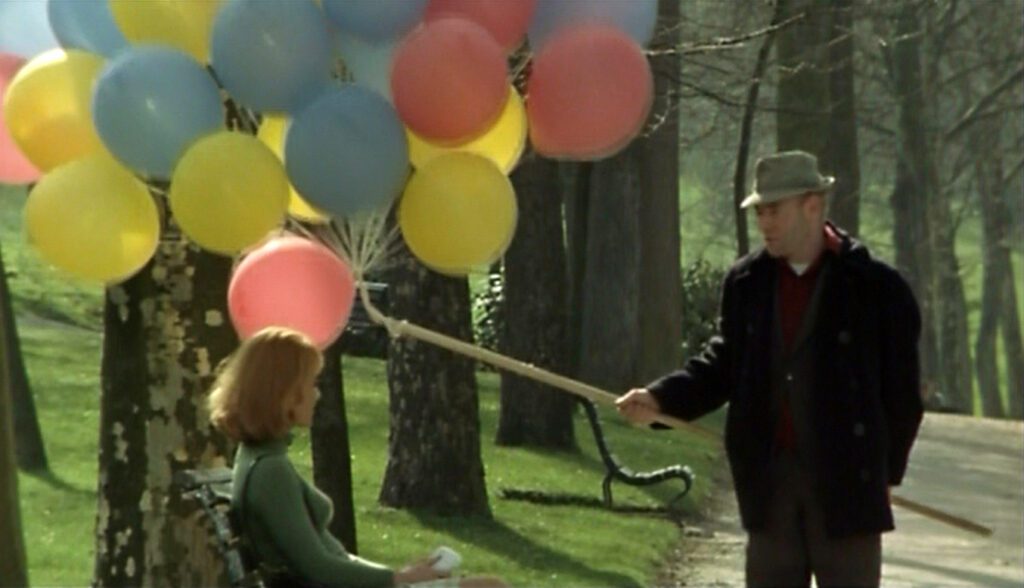
La rupture
1970, directed by Claude Chabrol
La rupture is the story of a nightmare. It opens with Jean Racine’s question, “What utter darkness surrounds me all of a sudden?” and with a burst of violence by a breakfast table it wastes no time plunging into this “utter darkness”. The plot follows Hélène Régnier as she works her way out. Her story is never cast into doubt, but it has the quality of a dream. While everything unfolds, she lodges at a boarding house which she enters and leaves in a daze. She checks in while sedated, and she walks out after drinking orange juice spiked with LSD. What happens in the interval is strange enough to be a hallucination, but the movie is interested in the reality beneath.
To put it another way, La rupture straddles two worlds: the real world of ordinary people like Hélène who struggle with life, and the fairy-tale world of her husband’s bourgeois family. When Paul visits the Régnier mansion, he and Charles’ father walk in on Madame Régnier reading to their adult son in bed: “The knight kissed the young queen’s hand, then he fell at her feet.” It’s entirely within character for her to tell her son children’s stories, and this detail speaks volumes about wealthy people like the Régniers who traffic in illusions. Her husband Ludovic hires Paul to fabricate evidence against Hélène, and at the climactic confrontation Hélène gets her way because the Régniers wish to preserve the illusion of decency in front of their guests.
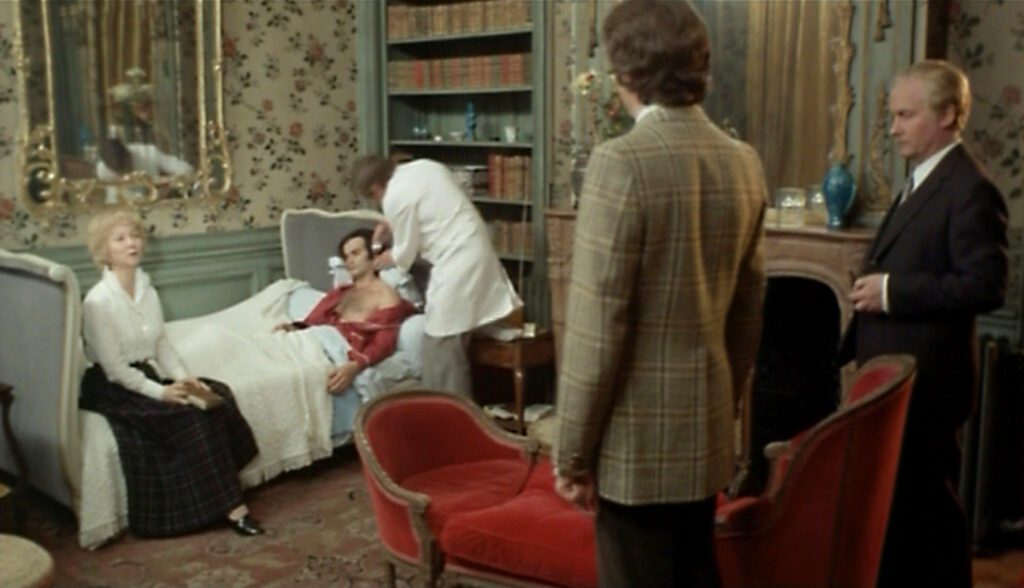
The dream-world of Charles’ parents is a corrupted version of the parallel real world that ordinary people inhabit. Each major character belongs to one or the other world, and each has a twin on the other side. Madame Pinelli and Madame Régnier are both reserved middle-aged women anxious to preserve decorum, but one is motivated by protective feelings for her family and guests, while the other is driven by fear of her husband and fear for her social standing. Their husbands Henri Pinelli and Ludovic Régnier seem opposite, but therein lies the parallel: one is an alcoholic, a man with no control, while the other is a captain of industry and property, a tyrant obsessed with control. Their respective children are also paired; both Elise and Charles are as helpless as babies. Elise draws pictures on a small chalkboard, while Charles draws on a mirror of the same size and proportions.
Hélène’s “evil twin” is Paul Thomas’ girlfriend Sonia, who puts on a wig and pretends to be Hélène. Whereas Hélène had danced nude in bars to support her family through hard times, Sonia is everything a proper religious bourgeois judging Hélène would wrongly see in her – a nymphomaniac and a sexual abuser. Paul’s counterpart is Hélène’s lawyer, who looks almost identical but whose honesty is equal to Paul’s dishonesty. He fights for the disadvantaged, and he’s not overly concerned about his fees.
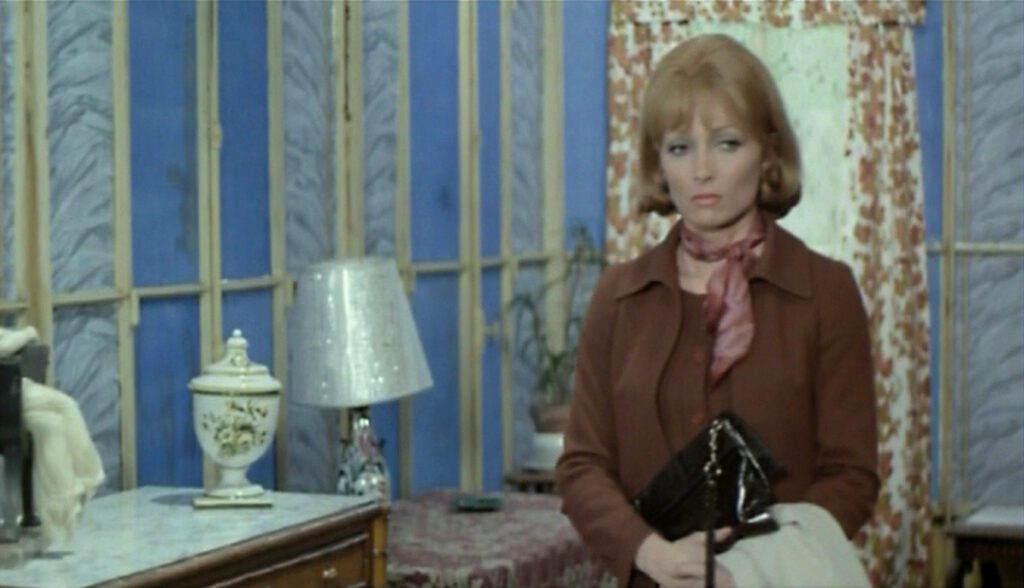
Topping out the parallels are the two houses, the Pinelli boarding house and the Régnier mansion. By an odd coincidence, Mr. Régnier happens to own both. One is filled with lively, fascinating, real-life characters, the other with stiff personalities whose idealized existence is detached from ordinary life. The mansion is introduced with a cinematic gesture that suggests something unreal. Hélène lies down to sleep off her valium, the camera zooms back from her face, then a reverse zoom whisks us toward the mansion. Though the place and its occupants will be all too real to Hélène, still the Régnier household must seem incredible, like something she dreamed up.
In all these doublings, the world of the wealthy is a world of illusions. Madame Régnier’s fears are founded on illusion; her husband’s invincible control is an illusion; Sonia creates an illusion with her costume; and a mirror presents an immaterial image as opposed to the physical image on a chalkboard. Hélène’s episode, bracketed by the two drugs that distort her perception, represents her encounter with this world of illusion, but she herself remains rooted in reality. By giving her acid, Paul momentarily draws her into illusion, and she goes outside with the three old women (the mythical Three Fates) to ask the friendly balloon vendor in the park to release his balloons. The ending leaves her under the influence of the drug, but we know it will wear off.
Reality and illusion intersect in the balloons. As they float and scatter into the air, Hélène’s troubles dissipate. Her son is recovering, Paul is exposed, her in-laws have no more hold on her, and her husband, who had no wish to continue living, is dead. Hélène has crossed paths with a world of falsity and triumphed.
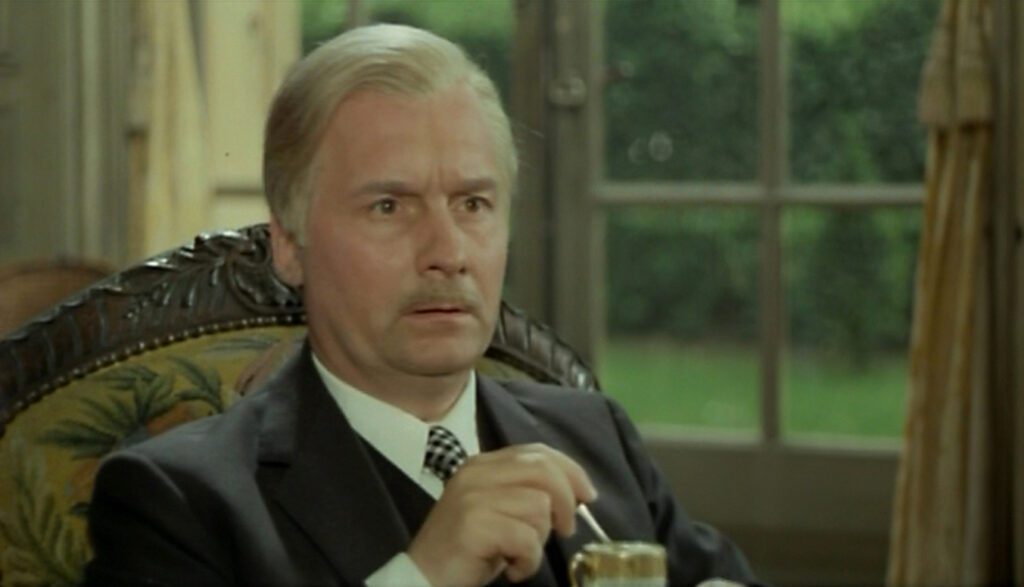
If the bourgeoisie inhabits a world of lies, they inherit it from the aristocracy of past centuries, and Ludovic Régnier bears the traces of the old order. His surname is close to “régner” (to reign), and “Ludovic” is a cognate of “Louis”. He projects the self-importance of a king, and his demand for custody is motivated not by grandfatherly love but by the aristocratic pretension of a monarch who needs a prince to carry his power forward.
In summary, La rupture presents a definition of justice. Hélène is thrust into a nightmare, her world tossed out of balance, and she sets it right with a tenacious single-minded determination, never veering from her goal. Everything she fights for is exactly what belongs to her, nothing more and nothing less. She wants custody of her child, safety, and whatever money and possessions she’s entitled to. She is absolutely precise in her accounting, demanding only what she earned as a barmaid, the money Paul stole from her, and the fare for the airport taxi. No matter how much Charles or Paul or Ludovic Régnier has wronged her, she never seeks retribution or harm, or even expresses such a wish. When she discovers Paul’s treachery she speaks the truth to him, but she does not assail his character or refuse to deal with him. Still she is no fool… she turns down his lift to the airport and his comically desperate offer of a drugged bonbon. She initiates divorce proceedings not out of lack of love for Charles, but simply to protect herself and their son from his erratic behavior.
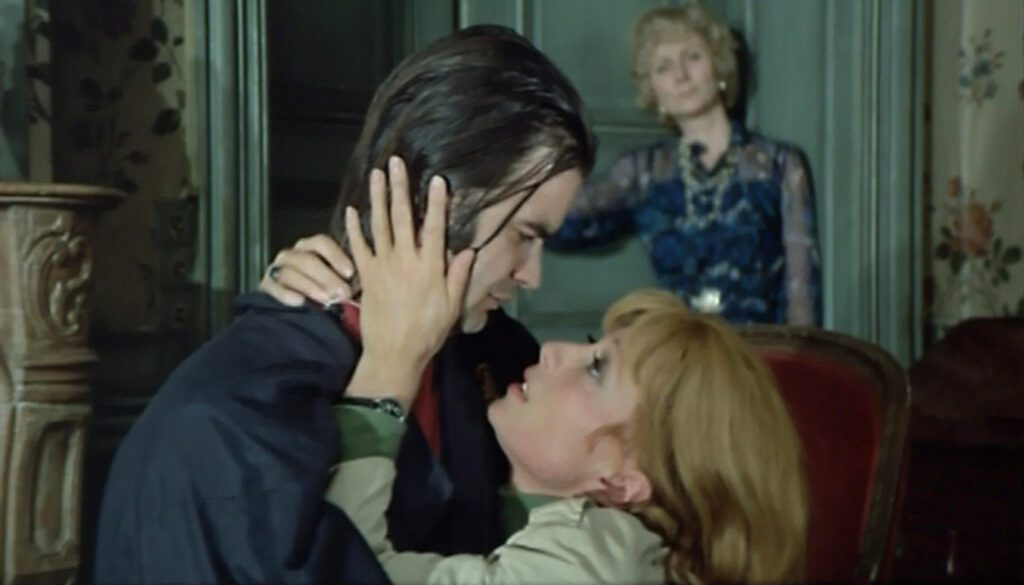
When Hélène arrives at the airport to find she’s been tricked, there’s a flash of recognition like in Le boucher when Hélène (Stéphane Audran’s character with the same name) finds the lighter missing. She understands at once not only what Mr. Régnier has done to her, but also that her husband is the way he is because of his parents. She rushes to her in-laws’ mansion not just to get the taxi fare, but to embrace Charles, to show him sympathy for having grown up in that wretched household. She’s not about to drop the divorce or let Charles raise their son, but she sees the kernel of innocence in her husband who had looked so monstrous in the opening scene.
The idea of justice in La rupture is not some impossible fantasy, the kind of abstract ideal that comes from a life of privilege. Rather it’s a practical and modest approach to life, the kind that comes from an honest struggle with life’s difficulties. By contrasting the unreality of wealthy people’s view of life against the clarity of Hélène’s vision, the movie signals its belief in her version of justice. With its saturated colors, its titles in a children’s book font, and its interplay between fantasy and reality, La rupture is like an adult fairy tale. Instead of an impossible happy ending, it ends with a plausible arrangement of reality. Things may not always work out, but with determination and a vision of justice people can make the best of a situation.
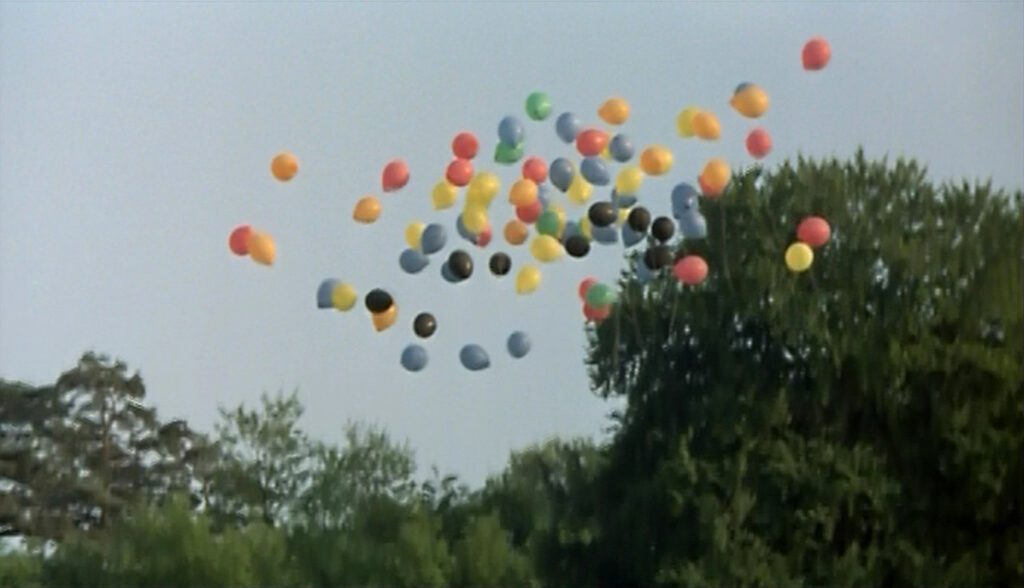
La rupture begins, like so many movies, with signs of forward-moving time – horizontal camera movement, a dramatic event, a hook drawing viewers into a narrative; and it ends with a hint of eternity in the vertical motion of the rising balloons. To appreciate its resolution we must throw out any conceptions of good and evil. Hélène is not a saint (as Paul calls her) but an exemplary yet ordinary woman. Charles is not a monster but the pitiable offspring of parents mired in self-deception. Nobody’s punishments or rewards are exaggerated. Hélène’s problems are lifted from her, and to want any more than that would step beyond the bounds of justice.
CONNECTIONS:
Sunrise – Horizontal movement at beginning, circle(s) rising in the sky at end
The Wizard of Oz – Reality preferable to a dream world; doubling of characters between the two worlds; story in the form of a fairy tale
The Third Man – Fairy tale for grown-ups
Ugetsu monogatari – Framed by horizontal and vertical movements
I Knew Her Well – Exemplary protagonist whom society judges as a loose woman
Le boucher – Turning point when a character named Hélène understands a seemingly monstrous man in a flash
Pan’s Labyrinth – Father’s care for his son rooted in aristocratic pride rather than paternal love